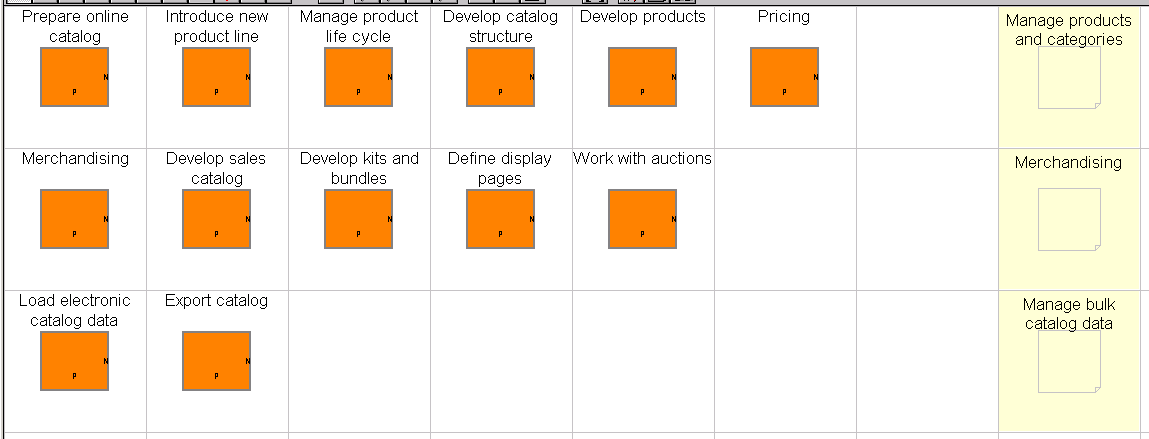Process: Catalog management - B2B direct
Flow

Objective
Create, load, and manage the set of products for businesses to operate online stores.
Description
Businesses need to manage a catalog over its life cycle and consider the following elements:
- Catalog design
- Design the catalog structure or taxonomy for which to describe and enter products in the catalog.
- Catalog load
- Load the product information, either manually or using automation, into the catalog based on the defined taxonomy.
- Merchandising
- Add merchandising constructs such as associations, kits, guided sales techniques, and sales catalogs, to promote the sale of products to the customer.
- Catalog maintenance
- Product management will continue to evolve the catalog. New products are introduced, old, obsolete products are discontinued, product information is often revised, and prices from suppliers may change frequently. Catalog maintenance may involve the first three steps as product additions and deletions may cause the catalog to be redesigned and loaded again.
- Catalog syndication
- Businesses may publish the catalog or a subset of the catalog externally to third parties or onto other media.
- Online sales catalog
- The catalog containing product content and business logic to display products and categories to customers. This includes associating display pages and assigning prices to the products.
Edition
Professional, Enterprise, and Express
Subprocesses
- Define display pages
- Develop catalog structure
- Develop kits and bundles
- Develop products
- Develop sales catalog
- Export catalog
- Introduce new product line
- Load electronic catalog data
- Manage product life cycle
- Merchandising
- Prepare online catalog
- Pricing
- Work with auctions
(C) Copyright IBM Corporation 1996, 2006. All Rights Reserved.